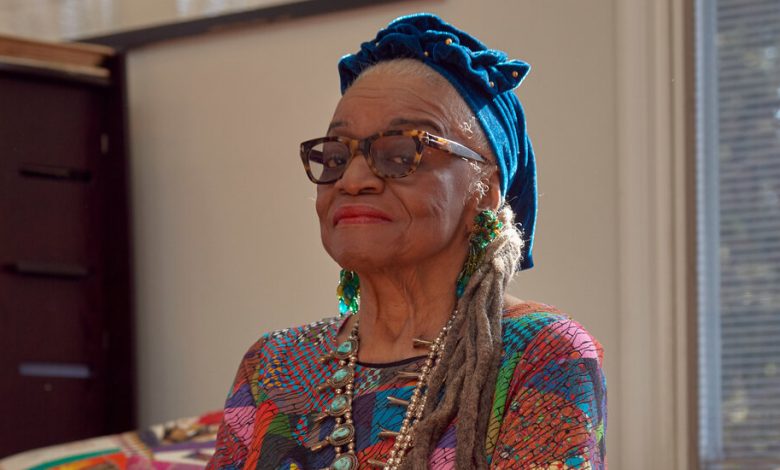Faith Ringgold Perfectly Captured the Pitch of America’s Madness

Faith Ringgold, who died Saturday at 93, was an artist of protean inventiveness. Painter, sculptor, weaver, performer, writer and social justice activist, she made work in which the personal and political were tightly bonded. And much of that work gained popularity among audiences that didn’t necessarily frequent galleries and museums. This was particularly true of her series of semi-autobiographical painted narrative quilts depicting scenes of African American urban childhood, subject matter that translated readily into illustrated children’s books, of which, over the years, Ringgold published many.
Altogether, hers added up to a landmark-status career. But the art establishment, as defined by major museums, big-bucks auction houses and a few talent-hogging galleries, never knew quite what to do with it, or with her. So they didn’t do anything. No mega-surveys, no million-dollar corporate commissions, no Venice Biennale-type canonizations.
Recently, though, very late in the day, came a serious uptick in attention. In 2016, the Museum of Modern Art finally brought Ringgold into its collection with the acquisition of several pieces from early in her career. One of them was a monumental 1967 painting titled “American People Series #20: Die.” It shows a crowd of panicked men, women and children, white and Black, screaming and bleeding, and stampeding in all directions as if under lethal attack from some unseen force.
It’s useful to remember where Ringgold stood in her life at the time she painted the picture. Harlem-born, she’d had a classical art education, was teaching art in public school, and was painting what she herself described as Impressionist-style landscapes. She was also reading James Baldwin, listening to the news, and seeing American racial politics shift from civil rights-era passive resistance to a newly assertive Black power. The country was on red alert, just as it is today, and her art responded to the emergency by turning topical.
In the paintings she called the “American People Series,” of which “Die” was one, white people and Black people appear together, but with skewed power balances made clear. In an early picture, “The Civil Rights Triangle” from 1963, five men in business suits, four Black, one white, form a pyramid, with the white man on top, indicating that to the extent the civil rights movement was white-approved, it was also white-controlled.




